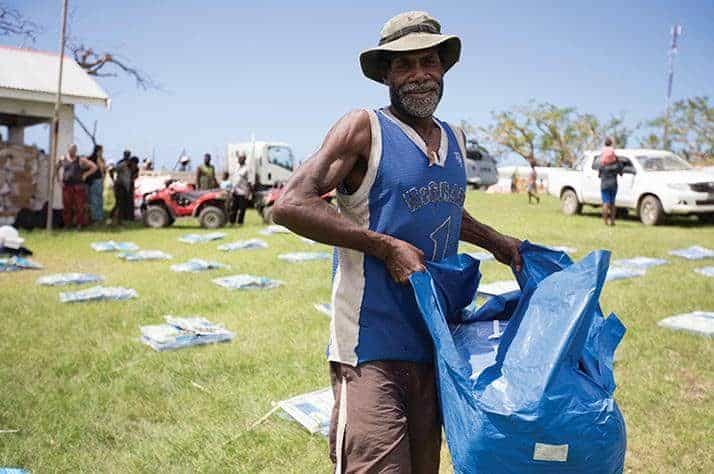Written by Matthew Fisher
TACLOBAN, Philippines—More than two weeks after typhoon Haiyan slashed through this always scruffy seaside town in Leyte, the media spotlight has quickly faded.
But the hard slog to get the Eastern Visayas back on its feet has only just begun, as I discovered during a visit to a Samaritan’s Purse clinic where several Canadian health care professionals-among the many Canadian volunteers from agencies such as Oxfam, the Red Cross and the UN now working in Tacloban-were helping those wounded by the storm or who have fallen ill in the two weeks since then because of a lack of reliable drinking water.
The epicentre of what is a massive international relief effort to help Filipinos cope with the aftermath of the monster storm, remains Tacloban’s tiny, tumbledown airport. With space enough to only park a combination of four C-130 Hercules transports or small propeller-driven passenger planes at the same time, harried U.S. Marine Corps air traffic controllers and logisticians continue to try to thread a needle.
Aircraft fly circuits above the airstrip waiting their turn to land while those already on the ground quickly disgorge loads of food, water and temporary shelters and welcome human cargo, who have waited for hours, often in the rain, for a precious free ticket out of their misery.
Many of the homeless queuing for these mercy lights still have no personal belongings other than the shirts on their backs to take with them to the dazzling bright lights of Manila. More than 10,000 of these survivors have already made the trip to the Philippine capital.
Still, bodies kept turning up when I was in Tacloban this weekend, pushing the death toll well above 5,200 across the eastern Visayas. Because many of the approximately 1,700 missing will never be accounted for, the likely final death count will eventually rise to about 7,000.
Guesses as to the number of injured are, of course, much higher. Nobody has any idea how many tens of thousands people were injured by the typhoon or now have water-related digestive problem. Filipino media reported Monday, for example that there had been an outbreak in Tacloban of leptospirosis, which is carried in the urine of infected animals who transmit it to humans through open wounds.
“Our patient’s main concerns right now are wounds and respiratory problems,” said John Troke of Samaritan’s Purse, an emergency room nurse from Kelowna, B.C. now working out of a badly damaged hospital which usually treats patients suffering schistosomiasis, which is another water-borne disease. “Just now we are starting to see a lot of diarrhea in the five and under category.”
Like almost every one of the foreigners who have flocked here to help, Troke was unequivocal about the scale of the tragedy.
“This is the worst disaster I’ve been involved in,” he said. “It is like the destruction caused by a tornado but at a different level. There is total destruction.”
For Troke the road to Tacloban began when as a teenager he watched “natural disasters on the news and wanted to find a way to contribute. . . . I do this because it is a rewarding way to give to those who have nothing.”
For those still trapped in Tacloban the city remains in a calamitous, parlous state. During a 40 kilometre drive south to where Troke worked, wrecked and shattered homes and trees remain everywhere. Along the way I saw a Robinson’s store-which in Canada would fall somewhere between a Sears and a Walmart-that had been picked so clean by looters there was not a scrap of anything left.
Yet amidst the ruins there are signs of hope. After several tense days and nights, security has been fully restored by the Philippines army. There is still no power but four of Tacloban’s 10 gas stations have re-opened. A few stalls have begin to sell fruit.
Swarms of work gangs have been engaged on short-term contracts by the UN to start to tackle the mess. U.S. navy warships have brought in large amounts of heavy equipment from a Marine Corps base in Japan so that Marines can move some of the biggest pieces of wreckage.
However, before too long the foreign troops and the most of the foreign emergency relief workers now here will begin to trickle home, leaving the Filipinos to cope as best they can.
The numbers are daunting. The lives of 13 million Filipinos were disrupted by the super typhoon, according to the UN.
Damage estimates go as high as $19 billion US.Taking into the account the feeble peso, to a western country the loss would be several times bigger than that.
The most recent rice harvest was largely lost to rain-damage caused by the storm. The next harvest is in jeopardy because there may be no rice seed to plant.
These are, in fact, only the early innings in the typhoon Haiyan crisis.
For more information and to make a donation, visit the Samaritan’s Purse website.






